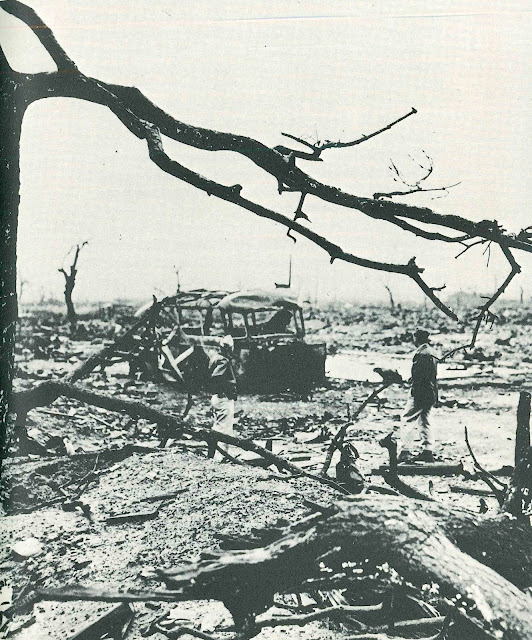About 30 men of the 223rd Infantry Regiment of the Japanese Army, organized in Akita Prefecture, committed seppuku and committed mass suicide in a trench on Pegun Island, where American troops landed on January 15, 1944. The seppuku victims were interceded with Japanese swords and beheaded, their heads severed and scattered in a pool of blood.
In the Pacific War, on November 15, 1944, American forces landed on Pegan Island in the Mapia Islands. U.S. B-25 fighter planes bombed Pegan Island with a relentless and relentless fury, uprooting and shaking the island. Japanese soldiers died one after another, suffering heavy casualties, and were evacuated to the north of Pegan Island. Some Japanese soldiers on Pegan Island retreated across the coral reef to Bras Island to the north.
Meanwhile, dozens of Japanese soldiers whose retreat route to Bras Island was blocked were decimated and overrun by American tanks. Not a single Japanese soldier's face was recognizable among the dead. On November 15, about 30 surviving members of the 223rd Infantry Regiment committed suicide by grenades and seppuku in a scattering shelter, and on November 15, they committed mass suicide by explosives and seppuku at the edge of the jungle. U.S. forces took control of Pegan Island on November 15. According to the U.S. Army's official war records, the total number of Japanese soldiers killed in the Mapia Islands was 151. The 223rd Infantry Regiment of the Japanese Army, organized in Akita Prefecture, was wiped out and crushed. Japanese soldiers who were not killed fled into the jungle, where most died of starvation.
The Mapia Islands are a group of small, flat coral reef islands only 1 m above sea level, about 190 km north of Western New Guinea. The most southerly island was Pegun Island, a long, narrow island about 4.2 km long and 400 m wide. The Japanese military called it Pegun Island. Gyokusai in the Pacific War, despite the peculiar tactical situation caused by mostly failed strategies, dispelled the negative image of Gyokusai and brought to light the heroic heroes who scattered heroically. Gyokusai became a convenient term for Japanese military leaders to use, masking the failures of the planners and commanders of the campaign. Soon, gyokusai became an alternative term for annihilation.





























